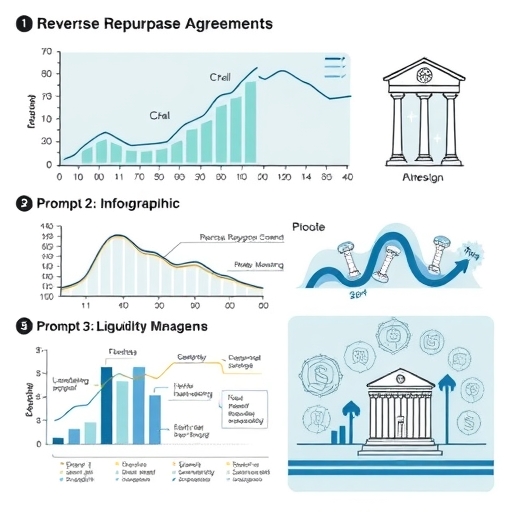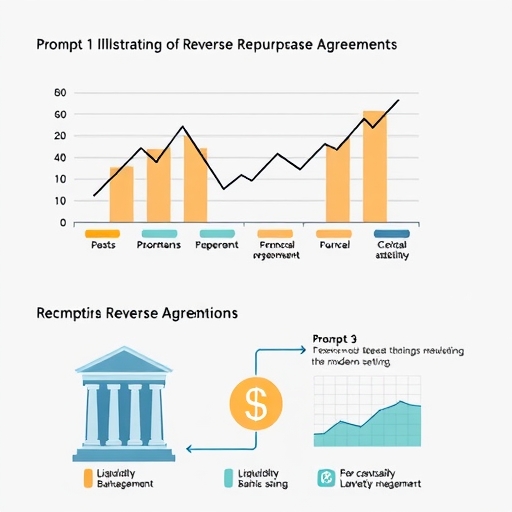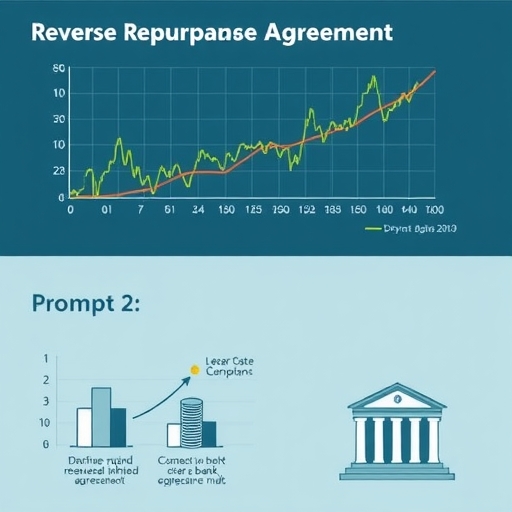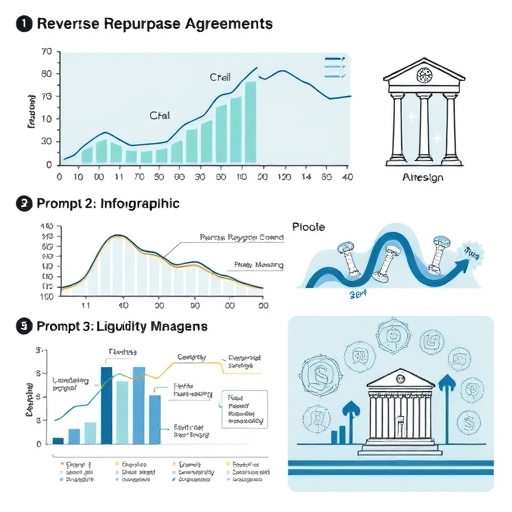Unveiling Reverse Repurchase Agreements: The Core Mechanics
Welcome, fellow financial explorer, to an insightful journey into one of the most pivotal yet often misunderstood instruments in modern finance: the Reverse Repurchase Agreement (RRP). Perhaps you’ve heard the term whispered in financial news or seen it in central bank reports, but its true significance and operational intricacies remain a mystery. Fear not, for we are here to demystify this powerful tool, guiding you through its anatomy and profound implications for market liquidity and currency stability.
At its heart, an RRP is a seemingly simple transaction, yet it serves as a critical pulse point for the financial system. Picture this: one party sells a security to another party, with a simultaneous agreement to buy it back at a higher price on a specified future date, often as short as overnight. Think of it as the ‘seller’s side’ of a standard repurchase agreement, or ‘repo’. While it looks like a sale and repurchase, its economic function is that of a collateralized loan.
Consider the parties involved. The entity selling the security is effectively borrowing cash, while the entity buying the security and agreeing to sell it back is lending cash. The original security, typically a highly liquid government bond like a U.S. Treasury, acts as collateral for this loan. This collateral is paramount, as it significantly mitigates the default risk for the cash lender. If the cash borrower (the original seller) fails to repurchase the security, the cash lender can simply keep the collateral, recovering their principal.
The difference between the initial sale price and the higher repurchase price represents the interest paid to the cash lender for the use of their funds. This interest rate is the effective yield of the RRP transaction. For instance, if you “sell” a security for $100 and agree to “repurchase” it for $100.01 tomorrow, that $0.01 is your overnight interest. This fundamental mechanism underpins billions, sometimes trillions, of dollars in daily financial flows, enabling institutions to manage their short-term cash needs with remarkable efficiency and security.
Do you see how this immediate exchange with a future reversal creates a short-term, secured lending arrangement? It’s a cornerstone of the money markets, providing both flexibility and stability. As we delve deeper, you’ll discover how central banks, most notably the Federal Reserve, strategically employ this instrument not just as a financial plumbing mechanism, but as a potent lever for executing monetary policy and safeguarding the health of the national currency.

Now that we have established the foundational understanding of an RRP as a collateralized loan, let’s peel back another layer to appreciate the intricate dynamics of its collateral and interest components. This depth of understanding is crucial, as it illuminates why RRPs are such an indispensable tool for managing liquidity within the financial system.
The choice of collateral in RRPs is rarely arbitrary. For central bank operations, and indeed for most institutional-level RRPs, the collateral predominantly consists of highly liquid, low-risk securities. In the United States, this often means U.S. Treasury securities, agency debt, or mortgage-backed securities guaranteed by government-sponsored enterprises (GSEs). Why such emphasis on high-quality collateral? Because it ensures that the cash lender (or in the Fed’s case, the counterparty lending cash to the Fed) faces minimal credit risk. Even if the borrower defaults, the collateral can be readily liquidated in the market without significant loss of value, thus protecting the lender’s principal.
A fascinating aspect of the collateral’s role is that, in many modern tri-party repo systems, the physical securities often do not physically change hands unless a default occurs. Instead, they are typically held by a third-party clearing bank (like BNY Mellon in the U.S.) that facilitates the transaction, ensuring delivery versus payment and the integrity of the collateral. This arrangement significantly streamlines the process and reduces operational risks, allowing for swift and massive flows of capital without cumbersome physical transfers.
The interest rate, determined by the difference between the sale and repurchase price, is a key determinant of the RRP’s attractiveness. This rate is highly sensitive to prevailing market conditions, including the supply and demand for short-term cash, expectations for future interest rate movements, and the specific offering rates set by central banks. For the Federal Reserve’s Overnight Reverse Repurchase Agreement (ON RRP) facility, the rate offered is a critical policy rate, influencing other short-term money market rates and providing a floor for the federal funds rate.
Consider the implications of this interest. For a money market fund, parking its vast sums of cash in the Fed’s ON RRP facility guarantees a safe, interest-bearing return, albeit at a low risk. This option becomes particularly appealing when other short-term investment avenues offer even lower yields or carry higher risk. Thus, the interest rate mechanism acts as a powerful incentive, guiding the flow of trillions of dollars in short-term liquidity, and in doing so, plays a direct role in how cash is valued and deployed across the entire financial ecosystem.

Now, let’s turn our attention to the central bank’s sophisticated use of RRPs. While financial institutions utilize RRPs for their individual liquidity management, the Federal Reserve employs them on a grander scale as a pivotal component of its monetary policy toolkit. For the Fed, RRPs are not merely a borrowing mechanism; they are a strategic instrument to influence the national money supply and maintain stability.
The Federal Reserve conducts RRP operations primarily as an open market operation (OMO). Unlike traditional OMOs where the Fed buys or sells securities outright, an RRP involves the Fed selling securities from its System Open Market Account (SOMA) portfolio to eligible counterparties, with an agreement to buy them back later. What does this achieve? Critically, it allows the Fed to borrow money from the financial system. This might sound counterintuitive, but consider the context: when there is excess liquidity sloshing around in the banking system, the Fed steps in to absorb it.
Why would the Fed want to drain cash? An excessive supply of money without corresponding economic activity can lead to inflation and currency devaluation, diminishing the purchasing power of the dollar. By engaging in RRPs, the Fed effectively withdraws cash from circulation, parking it temporarily on its own balance sheet. This action reduces the amount of reserves in the banking system and the overall money supply, thereby tightening financial conditions and putting upward pressure on short-term interest rates. In essence, the Fed uses RRPs to reinforce its target for the federal funds rate, ensuring that the cost of overnight borrowing between banks aligns with its policy objectives.
Think of it as a sponge: when the financial system is awash with cash, the Fed deploys RRPs to soak up the excess, preventing it from spilling over into unwanted inflation. This is a subtle yet immensely powerful way to manage liquidity. By shifting liabilities on the Federal Reserve’s balance sheet from bank reserves to reverse repos, the Fed signals its commitment to controlling inflationary pressures and stabilizing the value of the U.S. Dollar. This proactive approach underscores the Fed’s role as the guardian of price stability and the broader economic health.

Building on our understanding of the Fed’s strategic deployment, let’s dive deeper into the direct impact of RRP operations on liquidity management and, crucially, on the stability and valuation of the currency. It’s here that the macro-economic significance of RRPs truly comes into focus for every investor and trader.
When the Fed conducts RRP operations, it is primarily responding to conditions of significant excess liquidity within the financial system. This excess cash can stem from various sources: large-scale asset purchases by the Fed itself (Quantitative Easing), increased government spending funded by bond issuance, or a lack of profitable short-term investment opportunities for financial institutions. Regardless of the source, too much readily available cash can depress short-term interest rates below the Fed’s target and, more concerningly, could contribute to inflationary pressures if left unchecked.
Here’s how the RRP acts as a finely tuned instrument: by offering an attractive, risk-free rate on its Overnight Reverse Repurchase Agreement (ON RRP) facility, the Fed encourages eligible counterparties to deposit their surplus cash with it overnight. This effectively draws billions, sometimes trillions, of dollars out of the money markets and onto the Fed’s balance sheet. The immediate effect is a reduction in the supply of cash in the interbank market, which helps to maintain the federal funds rate within the Fed’s desired target range.
Consider the dollar’s value. If there’s an oversupply of U.S. Dollars in the system, simple economics dictate that its value could diminish, leading to a loss of purchasing power. The Fed’s use of RRPs directly counters this. By actively pulling dollars out of circulation, the Fed effectively increases the scarcity of dollars, thereby supporting its value. This is a direct mechanism through which RRPs contribute to currency stability. A stable dollar is paramount for international trade, investor confidence, and domestic economic health. It ensures that your savings retain their purchasing power and that businesses can plan with greater certainty.
Furthermore, the offering rate for RRPs acts as a crucial floor for short-term interest rates. If money market funds or other eligible institutions can earn, for example, 4.3% safely at the Fed’s RRP facility, they will be unwilling to lend money in the private market for anything less. This establishes a baseline for overnight lending rates, providing a predictable environment for financial institutions to manage their short-term cash flows. This strategic interplay between liquidity, interest rates, and currency valuation makes RRPs a fascinating and essential subject for anyone looking to grasp the true levers of the global financial system.
To truly appreciate the scope and sophistication of the Federal Reserve’s RRP operations, it’s essential to understand who the primary participants are and how these colossal transactions are facilitated. It’s not just any entity that can directly engage with the Fed’s ON RRP facility; there’s a specific ecosystem of eligible counterparties designed to ensure effectiveness and control.
| Counterparty Type | Description |
|---|---|
| Primary Dealers | Financial institutions that trade U.S. government securities directly with the New York Fed. They play a crucial role in the bond markets and are often involved in various Fed open market operations. |
| Money Market Funds (MMFs) | Mutual funds that invest in highly liquid, short-term debt instruments. MMFs are typically the largest users of the ON RRP facility, as it provides a safe, interest-bearing place to park their vast cash holdings. |
| Banks (Depository Institutions) | While banks are eligible, they typically utilize the Interest on Reserve Balances (IORB) facility more than the RRP. |
| Government-Sponsored Enterprises (GSEs) | Entities like Fannie Mae and Freddie Mac also have access to the facility, contributing to its broad reach across the financial landscape. |
The Federal Reserve Bank of New York, often referred to simply as “the Desk,” conducts these daily operations on behalf of the Federal Open Market Committee (FOMC). The daily RRP operations are a ballet of precision and scale. The New York Fed sets operational parameters, including the offering rate, aggregate limits, and individual counterparty limits, which influence how much cash can be drained from the system. The transactions typically settle via the triparty repo platform, where a clearing bank (like BNY Mellon) acts as an agent, holding the securities and facilitating the cash transfer. This ensures smooth, secure, and efficient settlement of trillions of dollars daily.
Understanding these players and their motivations helps us grasp why RRP volume can fluctuate so dramatically. When money market funds are flush with cash and looking for safe, short-term avenues to earn interest, the ON RRP facility becomes their go-to option. This dynamic interaction between the Fed’s policy objectives and the market’s liquidity needs paints a clearer picture of this powerful financial instrument.
To truly grasp the operational efficacy of the Federal Reserve’s Reverse Repurchase Agreement facility, we must delve into its meticulous blueprint and daily mechanics. This isn’t just about who participates, but how the entire process is structured to achieve the Fed’s liquidity management objectives with precision.
| Operation Step | Description |
|---|---|
| Announcement | The Desk announces the parameters for the ON RRP operation, including the offering rate and total amount of securities available. |
| Bidding | Eligible counterparties submit bids, specifying the cash they wish to lend to the Fed at the announced rate. |
| Allocation | If the total bids exceed the aggregate limit, the Desk allocates the securities proportionally among the bidders. |
| Settlement | Transactions settle the same day through the triparty repo platform, with the clearing agent handling collateral management. |
| Repurchase | The following business day, the Fed repurchases the securities at the agreed-upon higher price, returning the cash plus the accrued interest. |
This structured daily cycle allows for precise, predictable, and transparent liquidity absorption. The sheer volume of these operations can be staggering, often reaching hundreds of billions, and at times, trillions of dollars overnight. This scale highlights the depth of liquidity in the U.S. financial system and the Fed’s capacity to manage it. The Fed’s commitment to these operations underscores its dedication to maintaining control over short-term interest rates and, by extension, influencing the broader economic environment.
The financial markets, much like an ocean, exhibit tides and currents that influence liquidity and asset pricing. One prominent cyclical phenomenon that profoundly impacts the repo market, and consequently RRP usage, is the so-called “quarter-end effect” (which often extends to month-ends). Understanding this dynamic offers invaluable insight into the nuances of market liquidity and regulatory pressures.
Around quarter-ends, especially year-ends, we frequently observe a modest but distinct rise in repo rates, including the Secured Overnight Financing Rate (SOFR), which is closely tied to repo activity. This temporary tightening in the repo market is largely driven by what’s known as “window dressing” behavior by financial institutions, particularly large dealer banks. These banks adjust their balance sheets for regulatory and accounting reporting purposes, which can temporarily constrain liquidity.
For instance, under regulations like the Supplementary Leverage Ratio (SLR), banks prefer to reduce their balance sheet size at reporting dates to appear less leveraged. This leads to a reduction in their triparty repo borrowing and a shift in their lending activities. Some dealers may also shift lending to centrally cleared sponsored repo or increase sponsored reverse repo lending to take advantage of netting opportunities, further influencing market dynamics.
Simultaneously, money market funds (MMFs), which are significant lenders in the repo market, often shift their lending from the private triparty repo market to the Federal Reserve’s ON RRP facility during these periods. Why? Because the Fed’s RRP offers a risk-free, convenient alternative that doesn’t count towards bank balance sheet constraints in the same way, and it provides certainty during periods of heightened market volatility or reduced private market activity. This surge in ON RRP usage at quarter-ends is a clear indicator of this strategic shift in liquidity deployment.
Beyond the predictable quarter-end effects, the sheer magnitude and volatility of Reverse Repurchase Agreement (RRP) volumes offer a powerful signal about the prevailing state of liquidity in the financial system. We’ve witnessed dramatic swings in RRP usage, from record highs to precipitous declines, each telling a story about the evolving landscape of money markets and central bank policy.
Recall the period from late 2021 through much of 2022, when ON RRP volumes soared to unprecedented levels, peaking at an astonishing $2.55 trillion by December 30, 2022. What did this record high signify? It was a clear indication of a massive surplus of cash, or excess liquidity, in the financial system. This abundance stemmed primarily from the Federal Reserve’s aggressive Quantitative Easing (QE) programs and the substantial fiscal stimulus deployed during the pandemic, which flooded bank reserves and money market funds with cash. With limited high-quality, short-term investment options outside the Fed, market participants flocked to the ON RRP as a safe harbor for their surplus funds.
However, more recently, we have observed a sharp and sustained decline in RRP usage, with volumes falling below $200 billion—a stark contrast to their peak. This dramatic shift is primarily attributable to the combined effects of the Fed’s Quantitative Tightening (QT), which drains reserves from the system, and increased Treasury issuance, which creates new short-term investment opportunities (e.g., Treasury bills) that compete with the RRP facility. As the supply of Treasury bills increases and their yields become more attractive, money market funds naturally shift their cash away from the Fed’s facility and into these private market instruments.
What are the broader implications of such massive volume shifts? A high RRP volume signals that the Fed is actively absorbing a large amount of excess cash, preventing it from potentially fueling inflation or destabilizing short-term rates. Conversely, a rapidly declining RRP volume suggests that the system’s excess liquidity is being absorbed through other channels, primarily by the Treasury’s general account and increased bill issuance. This shift can be seen as a sign of financial system normalization, but it also prompts debate over potential future liquidity constraints once the RRP buffer is largely depleted. Could this lead to renewed pressures in the repo market, similar to those seen in September 2019?
The intricate dance of Reverse Repurchase Agreements (RRPs) with market liquidity and interest rates ultimately culminates in its profound influence on the national currency. For any investor, particularly those engaged in foreign exchange markets, understanding this nexus is not just academic; it’s fundamental to comprehending currency valuation and macro-economic stability.
At its core, the value of a currency is determined by supply and demand. If there’s an oversupply of money in the system relative to the goods and services it can purchase, that currency’s purchasing power will erode—a phenomenon we commonly call inflation. Conversely, if the central bank effectively manages the money supply, ensuring it aligns with economic output, the currency’s value remains stable, preserving its purchasing power.
This is precisely where the Fed’s use of RRPs becomes a critical line of defense for the dollar. By strategically drawing excess liquidity out of the financial system, the Fed directly reduces the amount of “loose” U.S. Dollars that could otherwise chase too few goods, thus pushing up prices. In essence, RRPs act as a vital mop, soaking up the inflationary potential lurking in an overabundance of cash. This action strengthens the dollar’s underlying value by making it scarcer and less prone to depreciation driven by monetary factors.
While we’ve explored the mechanics and direct impacts of Reverse Repurchase Agreements (RRPs), their role extends beyond mere balance sheet adjustments. RRP volumes and related market dynamics serve as powerful economic barometers, providing subtle yet significant insights into the underlying health and equilibrium of the financial system. For the discerning investor, learning to read these signals can offer a distinct advantage.
| Indicator | Significance |
|---|---|
| High RRP Volumes | Indicates cash is moving to the Fed due to limited attractive market alternatives. |
| Low RRP Volumes | Signifies an attractive private market, pushing funds away from the Fed. |
| Interest Rate Spread | Impacts liquidity concentration and cash flow motivations in the market. |
When choosing a broker to execute your trading strategies, especially in dynamic markets influenced by these macro factors, flexibility and advanced tools are key. In this regard, Moneta Markets‘ flexibility and technological advantages are worth noting. It supports mainstream platforms like MT4, MT5, and Pro Trader, combining high-speed execution with competitive spreads to deliver a robust trading experience.
Conclusion: The Enduring Significance of Reverse Repurchase Agreements
We have journeyed deep into the world of Reverse Repurchase Agreements (RRPs), uncovering their fundamental mechanics as collateralized loans, exploring their strategic deployment by the Federal Reserve, and analyzing their profound impact on market liquidity, interest rates, and the very stability of our national currency. What might seem like an arcane financial term is, in fact, a cornerstone of modern monetary policy and financial system management.
You now understand that RRPs are far more than just financial plumbing. They are a critical lever for the central bank to absorb excess liquidity, thereby countering inflationary pressures and preserving the purchasing power of the U.S. Dollar. By providing a safe and attractive overnight parking spot for trillions of dollars, the Fed uses RRPs to fine-tune money market conditions, ensure the effective transmission of its interest rate policies, and mitigate potential systemic risks stemming from an overabundance of cash.
The fluctuations in RRP volumes, from record highs to precipitous declines, serve as vital indicators of the financial system’s evolving liquidity landscape. They reflect the interplay between central bank actions, Treasury issuance, and the shifting preferences of key market participants like money market funds. For the discerning investor, monitoring these trends offers invaluable insights into the broader economic currents and potential future challenges in the money markets.
As the financial world continues to evolve, with new technologies and regulatory frameworks emerging, the principles underlying RRPs will remain steadfast. They embody the central bank’s enduring commitment to maintaining price stability and supporting the efficient functioning of financial markets. Mastering the concepts of liquidity management, monetary policy, and their impact on currency through tools like RRPs is not merely an academic exercise; it is an essential step for any investor or trader seeking to navigate the complexities of the global financial arena with wisdom and foresight.
FAQ
Q:What is a Reverse Repurchase Agreement?
A:A Reverse Repurchase Agreement (RRP) is a transaction where one party sells a security to another with an agreement to repurchase it at a later date for a higher price, serving as a secured lending mechanism.
Q:Why do central banks use RRPs?
A:Central banks use RRPs to manage liquidity in the financial system, absorb excess cash, influence short-term interest rates, and help maintain economic stability.
Q:How does an RRP affect currency stability?
A:RRPs can increase currency stability by reducing excess liquidity in the market, thus preventing inflation and maintaining the purchasing power of a currency.
